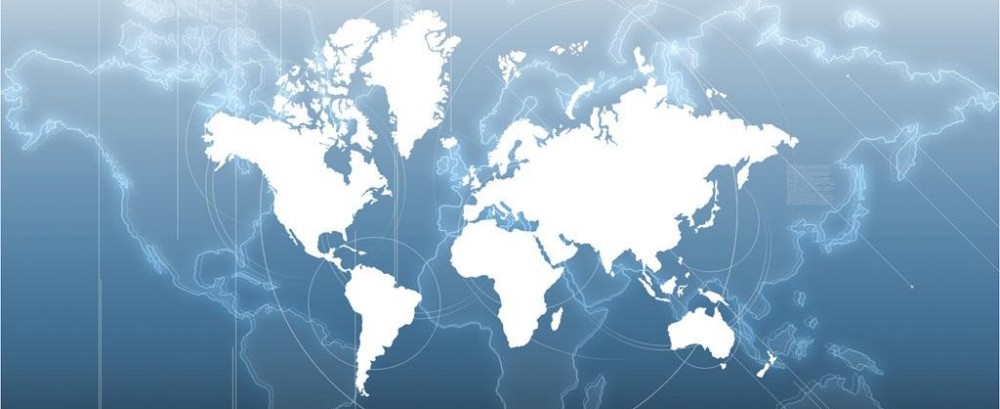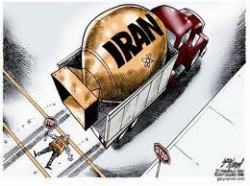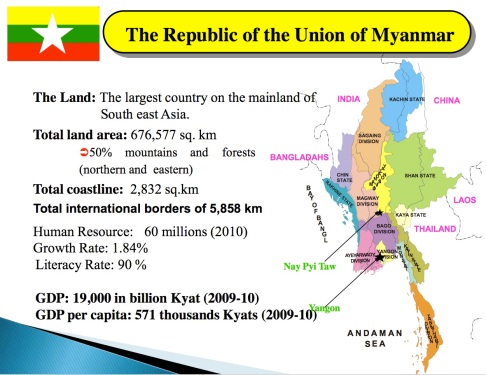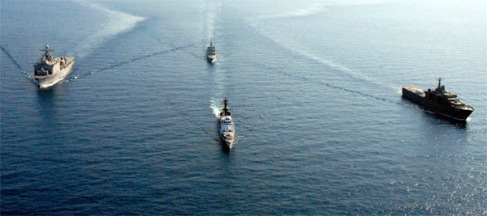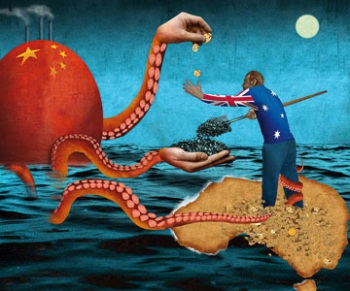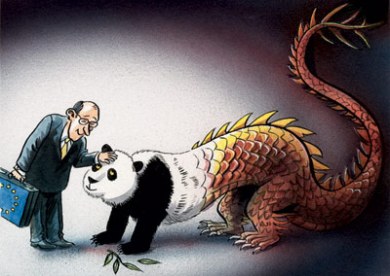Everyone has heard something of the Iranian Nuclear program, and most identify with the broad international concerns relating to it. This evidently reflects the international status quo which is embodied within what is arguably the successful nuclear ‘non-proliferation treaty’ (NPT). Since inception, the legal agreements and commitments between states, and subsequent formalized management of these through institutional governance, has resulted in many a nuclear ambitious state being deterred from acquiring a bomb. (South Africa, Australia, Argentina, Belarus, Brazil, Italy, Kazakhstan, Sweden, Switzerland, and Ukraine.) (Rauf, 1999). Most of those who have persisted in this goal, for better or worse, have bared witness, to the concert of western, internationally sanctioned, economic and military might. Most recently this was demonstrated with the war in Iraq a country which unstable.
An inherent opposition to this status quo i.e. Signatories of the treaty and the U.S. states dominance of international world order, suggest that the treaty, although broadly accepted by economically and militarily powerful nations, serves solely to maintain the power and influence of the U.S state and western concert of powers. From this perspective, nuclear ambitious nations must only conclude that these mechanisms suppress their rights, freedoms and security – citing the hypocrisy of the ‘worthy’ versus ‘unworthy’ states. Additionally, critics highlight failures of the treaty. This is evidenced by the NPT’s inability to effectively leverage this constitutional and institutional power, to deter states from acquiring nuclear weapons, best illustrated with the cases of Nth Korea, India and Pakistan (Brevern, 2009).
Clearly, the Iranian nuclear program is one of the central challenges which faces the newly elected U.S. president Barack Obama in his second term in office – and the international community at large. Currently, whether Iran is ultimately allowed to attain a nuclear weapon or whether military intervention is acted upon to prevent this scenario, the U.S. and international community are presented with a familiar quagmire of once again atomic proportions. This paper provides a brief background on the current situation, presenting the key debates and concludes by arguing that the U.S. and Israel and the world at large should learn to live with a Nuclear Iran.
Stakeholders & Background.
For several years now the U.S. policy makers and pundits have been debating if they should launch a pre-emptive strike on Iran’s nuclear facilities. In recent months tension has been escalated by a provocative Israeli leadership threatening a unilateral strike on Iran’s nuclear facilities. Key supporters of this argue that the only thing worse than the potential repercussion of military action against Iran, would be a nuclear armed Iran (Kroenig, 2012). Critics of this argue that the cost of bombing the facilities, potential for failure and the unpredictable regional political fallout, require a strictly non-military approach. They propose deterring Iran’s pursuit of nuclear capabilities though diplomacy, sanctions, technological warfare and covert operations. Proponents argue that if these measures fail to stop Tehran’s progress, the U.S. and the international community will need to live with a nuclear Iran (Kroenig, 2012).
Iran has weathered many years of increased sanctions and broad international efforts have indeed failed to halt their program. The American-Israeli efforts to disrupt the control systems of the Iranian nuclear facilities through the ‘stuxnet’ computer worm caused only temporary disruption, with reports from the IAEA indicating that sites had fully recovered (Williams, 2011). The IAEA released a key report in November providing evidence that sanctions and the technological warfare had caused no significant damage to Iran’s program. Undoubtedly, these efforts have only strengthened Iran’s resolve to acquire a bomb.
Increasingly, these events combined with the heightened war rhetoric from the central actors i.e. Iran, U.S. and Israel, collectively create a sense of urgency. The potential fallout and perceived sense of urgency being perpetuated by Israel, the U.S and international stakeholders is driven by an irrational fear of the theocratic regime and efforts to maintain the nuclear status quo in the middle-east. Furthermore, this discounts the recent historical failures of western military intervention in the region. This is not the first time that Washington has faced a hostile government attempting to develop Nuclear weapons. It surely won’t be the last. Clearly, the proliferation of weapons of mass destruction is not desirable, however a military intervention is not the answer (Sagan, 2006; Waltz 2012).
Intervention.
Israel is driving the case for an immediate strike on Iran’s nuclear facilities. They argue that such action, both necessary and justifiable, would achieve an ultimately more peaceful outcome to Iran crossing the nuclear threshold. Proponents of this view claim that if carefully managed, a military strike intended to destroy Iran’s nuclear program, could spare the region and the world a very real threat and improve the long-term national security (Kroenig, 2012). This confidence reflects a fundamental lack of insight to the serious and potentially severe outcomes that such a strike could precipitate.
The Israeli confidence is based upon previous strikes, which they argue to be a similar nature against Iraq and Syria. However, these are hardly comparable states, programs or scenarios to strengthen their case. The strike on Iraq simply spurred a covert nuclear program and increased leaderships resolve. Syria’s program was barely operational, budding at best and easily destroyed. In contrast, Iran’s program is broad and sophisticated, and already of industrial proportions. (Debs & Monteiro, 2012). The IAEA’s most recent reports demonstrate the large host of reactors, enrichment facilities and associated research programs and the various locations where equipment to enrich uranium is studied, manufactured, and assembled. Many of the declared sites are in remote locations, however intelligence suggest that many are in civilian areas. If the U.S. only strikes the main facilities, avoiding civilian areas for humanitarian reasons, Iran will undoubtedly have a nuclear future (Fly & Schmidt, 2012).
Israeli and U.S. military action could also swiftly spark a full-blown war. Iran will most likely launch missiles at military installations or perhaps civilian populations in the Gulf or Europe. Its proxy supporters abroad could be activated, rousing sectarian tensions in Iraq, disrupting the Arab spring, and ordering terrorist attacks against Israel and the United States. Subsequently, powerful allies of Iran, including China and Russia may respond by attempting to economically and politically isolate the U.S. With the potential for such far reaching and spiraling violence – there would be no clear path out for any parties resulting in a devastating war which would critically damage the U.S. standing in the Muslim world (Kronig, 2012). A surgical strike of Iran’s nuclear facilities would be a pointless and provocative exercise.
Middle East Proliferation.
Those fundamentally opposed to Iran procuring a bomb often discuss the subsequent regional proliferation which would occur in such a scenario. Proliferation is naturally highly undesirable, however the idea that Iran would be the central catalyst to rapid adoption in the Middle East is flawed logic. Kroenig suggests that neighboring states doubt the U.S ability to halt the program, and as a result are already shifting their alliances to Iran, whilst others are discussing their own nuclear programs. The idea of the proliferation of nuclear capability for states such as Egypt, Iraq and Turkey did not occur with a nuclear armed Israel. Why should Iran different? Additionally, the U.S has a successful record of preventing clients from acquiring nuclear weapons in response to a regional enemy, such as South Korea and Japan, in response to North Korean acquisition. (Washington agreed with Pakistan acquiring nuclear weapons in response to India) (Debs & Monteiro, 2012). It’s clear that it would be strategically wise to focus instead on reinforcing U.S ties with allies in the region – With a view to prepare for containment of a nuclear armed Iran. This approach would be significantly more economical and with less risk than attacking the Iranian Nuclear Regime.
A Rational Actor?
Who should and who should not have nuclear weapons? And who should decide? Peeling back the layers of logic at the very heart of the protest and increasingly threatening rhetoric, in spite of Iran’s stated peaceful energy ambitions, is an inherent distrust of the theocratic regime. The policy statements from the U.S. and the most vocal opponent to a nuclear Iran, Israel, is at the heart of the ‘case for war’. The danger of Iran is seriously exaggerated. In Kenneth Waltz’s words “Iranian Policy is not made by “mad mullahs” but by perfectly sane ayatollahs, who want to survive just like other leaders” (Waltz 2012, pg.3). Although the Iranian regime indulges in hateful anti-western rhetoric, they show no propensity for self-destruction.
The U.S and Israel avoids directly addressing the fundamental ideological and religious differences – as a very human source of distrust between two parties – sameness being fundamental to rapport – and leans on the moderating mechanism of the NPT to bring the international status quo to illustrate Iran’s neglect of international norms. Furthermore it confirms the breach of commitments as a signatory of the NPT. Portraying Iran as irrational helps to justify that the logic of nuclear deterrence does not apply to the Islamic republic. (Waltz, 2012).
The basic premise is that if Iran were to attain a nuclear weapon they wouldn’t hesitate to use it on a first strike against Israel – In spite of the massive retaliation and risking the annihilation of their own state. The argument for Iran not getting a bomb, shows disregard to the logic that nuclear weapons are primarily defensive not offensive arsenal. A component of the Israeli and U.S. opposition to Iran attaining a bomb is that unlike other states which historically feel vulnerable once armed, as they become acutely aware that these weapons make them a potential target for major powers. Instead they argue that Iran will become ‘emboldened’. There is a fear that an emboldened Iran may deliberately pass nuclear weapons onto terrorist groups. This again assumes a highly irrational Iran. Building nuclear weapons is a costly and dangerous business and no rational regime would transfer these assets to organizations which cannot be trusted or managed (Waltz, 2012).
Waltz concludes this argument stating that nuclear armed states are actually discouraged from bold and aggressive action. Examples include Maoist China, India and Pakistan, which since since acquiring weapons, have subdued their aggressive rhetoric and threatening action. There is little reason to think that Iran would break the mold.
Restoring Balance.
Kenneth Waltz’s central thesis argues that a nuclear Iran is likely to restore stability to the Middle East. Drawing on core tenets of realism, he argues that a nuclear armed Iran would restore the regional balance of power – as currently Israel is the only nuclear armed state. Fundamental power/military balancing between nation states leads to stability (Waltz, 2012). It’s clear that in the current scenario Israel is the provocateur – being the only nuclear armed nation whose military capability poses direct threats to neighboring countries. Waltz argues that this power begs to be balanced.
History demonstrates that young and unstable nuclear powers have all avoided nuclear escalation despite acute crisis. In Kargil, 1999, Pakistan and India avoided a nuclear war, also post the terrorist attacks on the Indian Parliament in 2001 and Mumbai in 2008. It’s evident that when the state survival is at stake – even supposedly irrational states – with nuclear weapons, have historically behaved in prudent ways (Debs & Monteiro, 2012).
When contemplating these arguments it’s clear that if Iran acquires nuclear weapons, Israel and Iran will naturally deter each other as nuclear states always have. The deterrence theory in this circumstance will hold, even if the Iranian arsenal is small. Arguably, there is little incentive for other countries in the region to acquire their own capabilities. Balance would be restored, the current crisis would dissipate, ultimately leading to a more stable Middle East than today (Waltz, 2012).
Conclusions:
The cost and risk of a ‘preventative/pre-emptive strike’ by Israel and/or the U.S. far outweigh that of non-intervention. As these arguments have illustrated, the probability of such an attack successfully achieving its objectives are minimal. Furthermore, the complex and highly unpredictable regional implications suggest that any attack would be far from ‘swift and surgical’. The existential fear perpetuated by Israel needs to be acknowledged and mitigated by the U.S. with purpose, to dissuade from any unilateral attack. The U.S. must instead focus on the eventuality of a nuclear armed Iran, through strengthening of relationships with allies in the region and by establishing measures to effectively manage containment once realized. Naturally, the tone in the public sphere should maintain a consistent message i.e. we do not condone the proliferation of nuclear weapons. But in no circumstance should the U.S. lead or support a preemptive military attack. Additionally, to address the fundamental distrust of the Iranian leadership, high and low level bilateral talks must be pursued and established to further socialize the sanctioned Iran into international circles. Isolation tactics have evidently only strengthened the Iranian resolve and heightened the dangerous rhetoric. Iran should be allowed to get the bomb, and the international community should be actively engaged in dialogue with the Iranian leadership throughout the process. History demonstrates that power needs to be balanced to deliver stability and peace.
References:
Waltz, K (2012) “Why Iran Should Get the Bomb”
[Online] accessed from: Foreign Affairs Magazine 2/11/12 : http://www.foreignaffairs.com/articles/137731/kenneth-n-waltz/why-iran-should-get-the-bomb
Joseph, U (2012) “Why Israel Should Trade Its Nukes”
[Online] accessed from: Foreign Affairs Magazine 2/11/12 :
http://www.foreignaffairs.com/articles/138224/uri-bar-joseph/why-israel-should-trade-its-nukes
Sagan, S (2006) “How to keep the Bomb From Iran”
[Online] accessed from: Foreign Affairs Magazine 2/11/12 :
http://www.foreignaffairs.com/articles/61915/scott-d-sagan/how-to-keep-the-bomb-from-iran
Kroenig, M (2012) “Time to Attack Iran”
[Online] accessed from: Foreign Affairs Magazine 2/11/12 :
http://www.foreignaffairs.com/search/Time%20to%20Attack%20Iran
Debs, A & Monteiro.N (2012) ‘The Flawed Logic Of Striking Iran’
[Online] accessed from: Foreign Affairs Magazine 2/11/12 :
Fly, J & Schmitt,G (2012) ‘The Case For Regime Change in Iran’
[Online] accessed from: Foreign Affairs Magazine 2/11/12 :
Rauf, T (1999) ‘Successes of the Nuclear Non-Proliferation Regime’
[Online] accessed from: 2/11/12 : James Martin Center for Nonproliferation Studies :
http://cns.miis.edu/pubs/ionp/iaea.htm
Brevern, H (2009) ‘Successes and Failures of the Nuclear Non-Proliferation Treaty
[Online] accessed from: 2/11/12 : http://esarda2.jrc.it/db_proceeding/mfile/B_2009_041_14.pdf
Williams, C (2011) Stuxnet: Cyber attack on Iran ‘was carried out by Western powers and Israel’
[Online] accessed: 2/11/12 from ‘The Daily Telegraph’:
